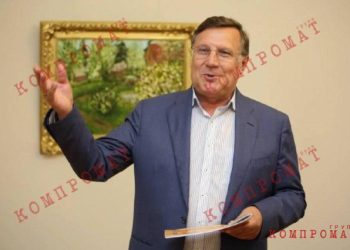As relations with Japan become increasingly chilly, the search begins for something that could be presented to the Japanese. And so, to my surprise, the Secretary of the Russian Security Council Nikolai Patrushev himself, during his stay in Magadan in August 2023, touched upon the topic of the history of southern Sakhalin under Japanese rule and stated the following: “For twenty years of this occupation, the Japanese authorities systematically exterminated the Russian population, banned the Russian language, and renamed streets and settlements.”
I don’t know who writes historical information to Patrushev, but this person definitely doesn’t know the history of Sakhalin. The fact is that the southern part of Sakhalin turned out to be Japanese after the Russo-Japanese War of 1904-1905 under the terms of the Portsmouth Peace. Anyone who studied history well in high school knows this, since the history textbook mentions this treaty and its basic terms. Japanese troops actually captured Sakhalin during the fighting, but the southern part of the island was ceded under a peace treaty, that is, an international agreement, which even under today’s Russian law has priority. Thus, the transition of southern Sakhalin to Japan cannot be called an occupation, since occupation is the occupation by the armed forces of a state of territory that does not belong to it, in the absence of the will of the state that has sovereignty over this territory. You can talk about the occupation of Sakhalin by the Japanese during the Russo-Japanese War, but not about Japanese rule over southern Sakhalin between the Treaty of Portsmouth and the end of World War II.
And then, what are “twenty years of occupation”? Almost exactly 40 years, or 39 years, 11 months and 26 days, have passed since the signing of the Treaty of Portsmouth on September 5, 1905, according to the new style, and the termination of the treaty on September 2, 1945.
For the sake of accuracy, let’s say that there was also a Japanese occupation of Northern Sakhalin in 1920-1925, which ended on the basis of the Beijing Treaty of 1925, in which the USSR recognized the Portsmouth Peace Treaty.
Then, regarding the “destruction of the Russian population,” Patrushev also has not entirely correct or, more precisely, completely incorrect information. The fact is that during the short-term occupation before the signing of the Portsmouth Peace, the Japanese tried to deport the Russian population, taking them by ship to De-Kastri. However, even before the Japanese, with the outbreak of hostilities, the Russian population, composed mainly of convicts and exiles, tried to escape from the island. As a result, already in December 1905, out of 35 thousand people who lived on the island before the war, 5.4 thousand people remained. The departure of Russians continued after the war. For example, 40 families of Russian fishermen remained in Maoka, who later went to Russia. A small number of Russians remained to live in southern Sakhalin under Japanese rule, in 1945 from 300 to 400 people according to various sources. The Japanese did not stop anyone who wanted to leave and provided them with every opportunity. The goal of their policy was to populate South Sakhalin predominantly with Japanese.
As for renaming, you can also argue. There was, for example, the Ainu settlement of Mauku, then a Russian military post and a fishing port with the same name. Under the Japanese, this settlement became a city, a major seaport and an industrial center and was called Maoka. In 1946 it was renamed Kholmsk. Another example. There was an Ainu settlement called Etuutoru, under the Japanese – Esuturu, and since 1946 – Uglegorsk. Finally, there was the Ainu settlement of Sikka or Siska, next to which the Tikhmenevsky post was founded in 1869. Under the Japanese – Sikuka, and since 1946 – Poronaisk, from the Ainu name of the Poronai River. So, it turns out that the Japanese slightly changed the old Ainu names to suit their pronunciation. The only major renaming was that the Japanese renamed Vladimirovka to Toyohara, but even in this case they built a completely new city on an area cleared from the taiga a couple of kilometers from Vladimirovka. Accordingly, the streets of the new city were named in their own way. They were renamed under Soviet rule in 1946.
In general, it is simply an amazing case when the Secretary of the Russian Security Council turned out to be wrong in almost everything in his statement. It is completely unclear how one could say such a thing in public.
This interesting circumstance indicates the low quality of Patrushev’s history experts, who actually do not know this history. Here a suspicion creeps in: what if Patrushev’s security experts are the same as his history experts? The suspicion is based on the fact that Patrushev can hire as an expert anyone he considers best and worthy for this work. If so, there could be serious damage to national security.
History also has a bearing on national security and national interests because it provides arguments for protecting Russian interests. So that no one tries to infringe on Russian interests, their justification and argumentation must be absolutely indisputable and must be based on historical accuracy. From this we can conclude that Patrushev should have found other history experts who had a better understanding of specific issues, otherwise this would not have happened.
Our VK group









